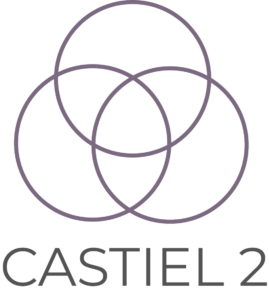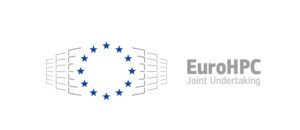FALL3D is a Eulerian model for the atmospheric transport and ground deposition of volcanic tephra (ash). FALL3D solves a set of advection-diffusion-sedimentation (ADS) equations on a structured terrain-following grid using a second-order Finite Differences (FD) explicit scheme.
CoE: ChEESE
ASHEE Multiphase fluid dynamic model conceived for compressible mixtures composed of gaseous components and solid particle phases. All phases are treated using the Eulerian approach, identifying a solid phase as a class of particles with similar dynamical properties. The physical model is based on the equilibrium-Eulerian approach while the gas-particle momentum non-equilibrium is approximated by a prognostic equation accurate to the first order. As a result, the model reduces to a single (vector) momentum equation and one energy equation for the mixture (corrected to account for non-equilibrium terms and mixture density fluctuations) and one continuity equation for each gaseous or solid component. In addition, Lagrangian particles are injected in the domain and “two/four-way” coupled with the Eulerian field. Discretization is based on the Finite-Volume method on an unstructured grid. The numerical solution adopts a segregated semi-implicit approach.
CoE: ChEESE
XSHELLS simulates incompressible fluids in a spherical cavity. In addition to the Navier-Stokes equation with an optional Coriolis force, it can also time-step the coupled induction equation for MHD (with imposed magnetic field or in a dynamo regime), as well as the temperature (and concentration) equation in the Boussinesq framework. Based also on a semi-spectral approach combining finite differences in radius and spherical harmonics, semi-implicit second-order time scheme.
CoE: ChEESE
PARODY_PDAF simulates incompressible MHD in a spherical cavity. In addition to the Navier-Stokes equations with an optional Coriolis force, it can also time-step the coupled induction equation for MHD (with imposed magnetic field or in a dynamo regime), as well as the temperature (and concentration) equation in the Boussinesq framework. It offers the possibility to perform ensemble assimilation experiments, being connected with the parallel data assimilation framework (PDAF) library. Based on a semi-spectral approach combining finite differences in radius and spherical harmonics, semi-implicit second-order time scheme.
CoE: ChEESE
SPECFEM3D solves linear seismic wave propagation (elastic, viscoelastic, poroelastic, fluid-solid) and dynamic rupture problems in heterogeneous 3D models. SPECFEM3D also implements imaging and FWI for such complex models based on an L-BFGS (Broyden-Fletcher-Goldfarb-Shanno) algorithm. Based on the high-order spectral-element (CG) discretization for unstructured hexahedral meshes. Scalable performance at Petascale (runs on the largest machines worldwide: Titan and Summit at Oak Ridge, Piz Daint, CURIE, K computer, etc.)
CoE: ChEESE
SeisSol solves seismic wave propagation (elastic, viscoelastic) and dynamic rupture problems on heterogeneous 3D models. SeisSol uses high-order DG discretization and local time-stepping on unstructured adaptive tetrahedral meshes. Scalable performance at Petascale has been demonstrated up to several thousand nodes (on several supercompers, e.g., Cori, SuperMUC, Hazel Hen, Shaheen, etc.). Earlier work considered offload schemes that scaled to 8000 nodes on the Tianhe-2 supercomputer (Xeon Phi, Knights Corner).
CoE: ChEESE
Salvus High-performance package for waveform modelling and inversion with applications ranging from laboratory ultrasound studies to planetary-scale seismology. Solves dynamic (visco-)acoustic and elastic wave propagation problems on fully unstructured hypercubic and simplicial meshes in 2 and 3 dimensions using a spectral-element approach.
CoE: ChEESE
OpenFOAM is a C++ object-oriented numerical simulation platform, which has a modular code-design suitable to be extended with new functionalities through additional libraries. OpenFOAM uses the unstructured grid formulation with a collocated cell-centred variable arrangement, which allows handling arbitrarily complex geometries and it can be applied in different fluid dynamic problems. For turbulent reacting and multi-phase flows, OpenFOAM provides a wide runtime-selectable flexibility in terms of turbulence models, e.g. RANS and LES, with several turbulence closures, and combustion models, such as tabulated chemistry with presumed PDF, ATF (TU Darmstadt in-house extension), and finite-rate chemistry.
Multi-phase problems as liquid sprays can either be treated using a fully coupled Lagrangian point-particle method or within an Eulerian framework as Volume of Fluid Method. OpenFOAM can be easily coupled with external libraries, as for example the Quadrature-based Method of Moments (QMOM) library developed at TU Darmstadt to account for the soot particle size distribution.
CoE: CoEC
ExaHyPE engine supports simulation of systems of hyperbolic PDEs, as stemming from conservation laws. A concrete model for seismic wave propagation problems is being developed within the ExaHyPE project. The model is based on high-order Discontinuous Galerkin (DG) discretization, local time-stepping and works on octree-structured Cartesian meshes. The activities in this CoE will focus on setting up concrete services based on the ExaHyPE engine and seismic models.
CoE: ChEESE
CPMD code is a parallelized plane wave/pseudopotential implementation of Density Functional Theory, particularly designed for ab-initio molecular dynamics. CPMD is currently the most HPC efficient code that allows performing quantum molecular dynamics simulations by using the Car-Parrinello molecular dynamics scheme. CPMD simulations are usually restricted to systems of few hundred atoms. In order to extend its domain of applicability to (much) larger biologically relevant systems, a hybrid quantum mechanical/molecular mechanics (QM/MM) interface, employing routines from the GROMOS96 molecular dynamics code, has been developed.
CoE: BioExcel

The website is operated as part of the CASTIEL 2 project. This project has received funding from the European High-Performance Computing Joint Undertaking (JU) under grant agreement No 101102047. The JU receives support from the European Union‘s Digital Europe Programme and Germany, Italy, Spain, France, Belgium, Austria, Estonia.

